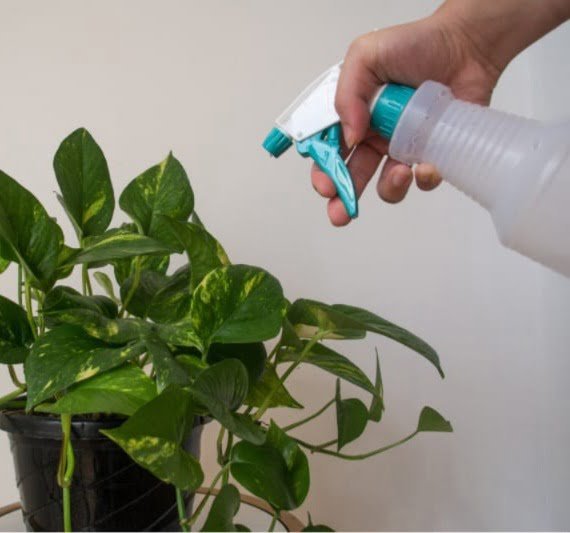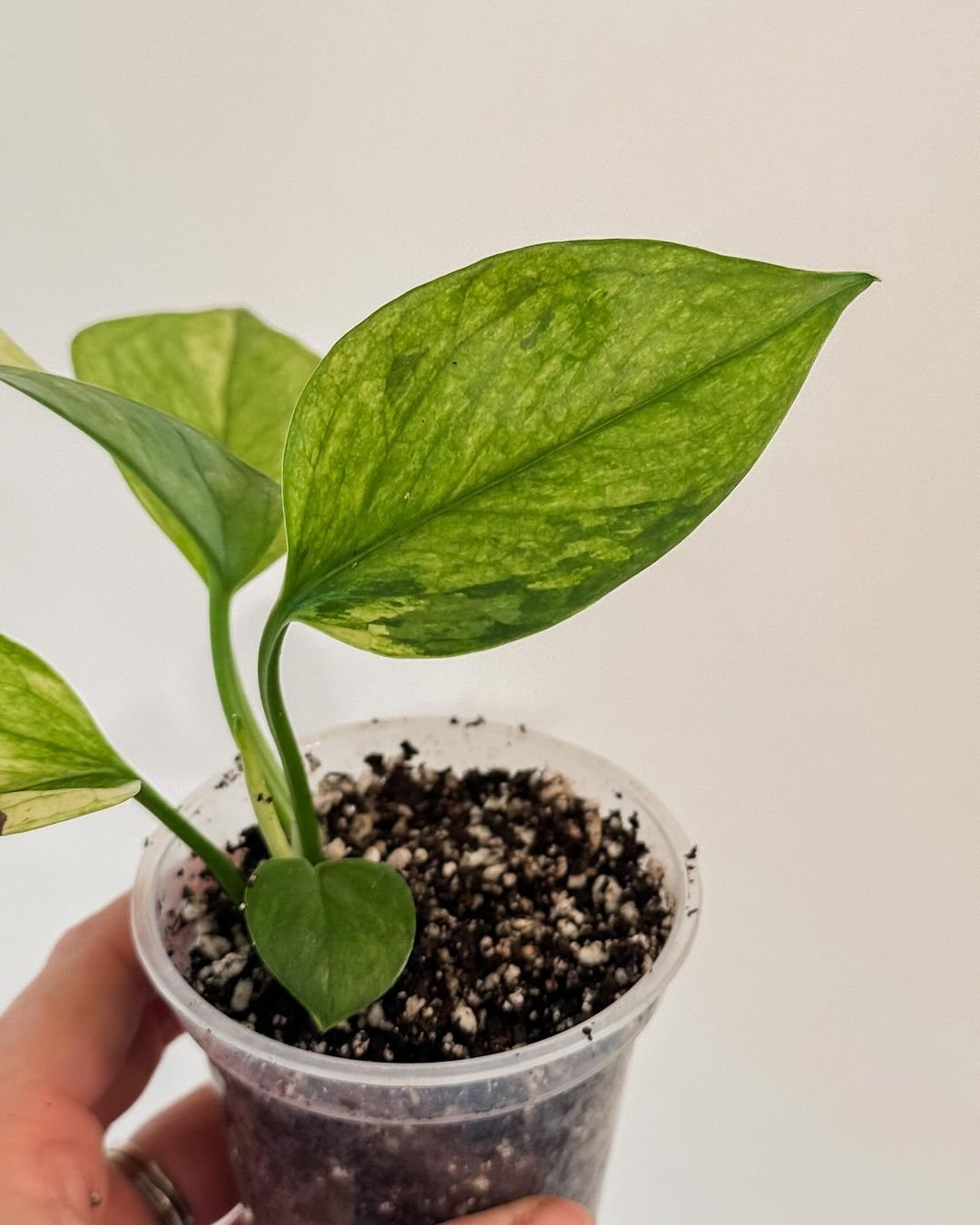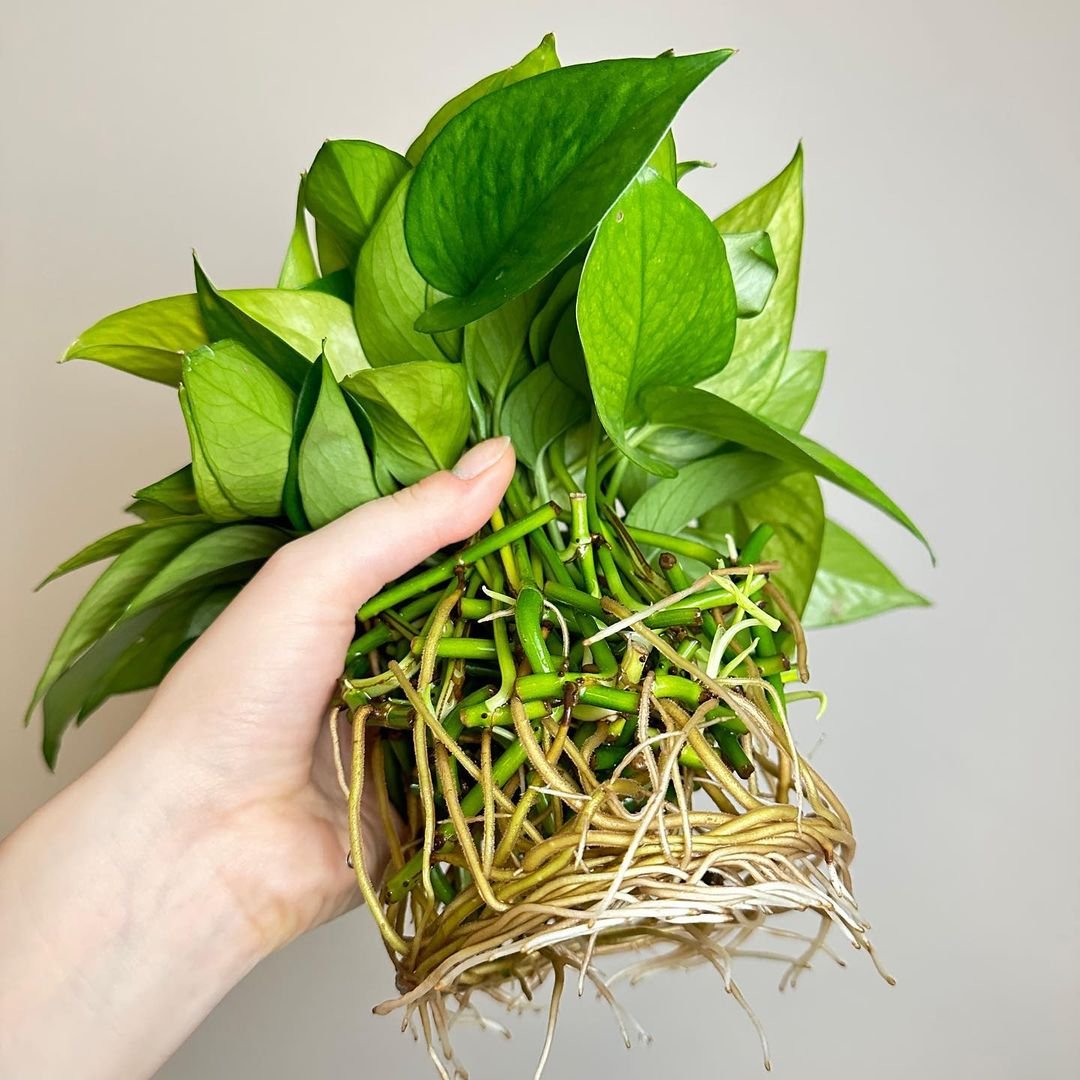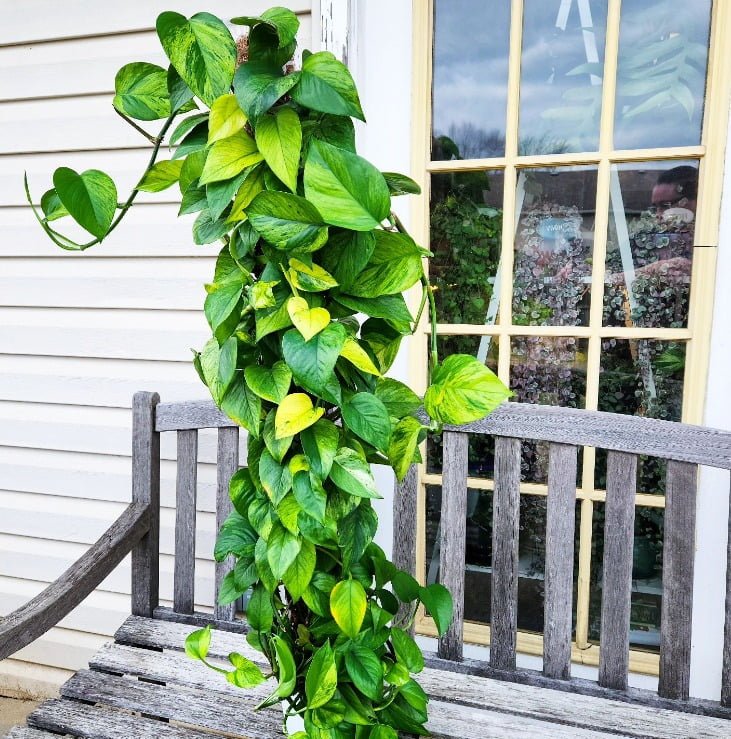Discover the allure of Jessenia Pothos as a stunning addition to your indoor plant collection. Learn essential care tips and styling ideas to enhance your home with this elegant and easy-to-grow plant.
Are you looking to add some tropical flair to your indoor plant collection? Look no further than the stunning jessenia pothos! This vining variety has captured the hearts of plant enthusiasts everywhere with its eye-catching foliage.
Part of the Araceae family, jessenia pothos goes by many aliases like jessenia philodendron, randy philodendron, and red-leaf philodendron. But no matter what you call it, this unique aroid is a showstopper sure to grab attention in any room.
In this guide, you’ll learn all the essentials for cultivating a thriving jessenia pothos houseplant. With their effortless care and stunning multicolored leaves, you’ll want to make space for these tropical beauties!
Here’s a short information chart for Jessenia Pothos:
| Aspect | Information |
|---|---|
| Botanical Name | Jessenia pothos |
| Common Name | Jessenia Pothos |
| Plant Type | Evergreen vine |
| Zones | Typically grown in USDA Zones 10-12 |
| Sun Exposure | Bright indirect light to partial shade |
| Soil Type | Well-draining, fertile soil |
| Watering | Moderate; keep soil evenly moist |
| Growth Habit | Trailing vine with heart-shaped leaves |
| Height/Spread | Can reach up to 6-10 feet in length |
| Special Features | Easy to grow, excellent for hanging baskets |
What is Jessenia Pothos?

The jessenia pothos (Philodendron spp.) is a hybrid variety derived from the pothos vine (Epipremnum aureum) and philodendron (Philodendron spp.) genera. This lineage gives it a truly unique look compared to the solid green pothos varieties.
Unlike the solid light or dark green pothos cultivars, jessenia sports the most incredible foliage colors including:
- Deep burgundy red
- Bright golden-yellow
- Rich shades of green
- And every combination in between!
These contrasting shades appear in streaks, patches, or speckles across the large glossy leaves in random, asymmetrical patterns. This makes every single jessenia leaf and vine utterly one-of-a-kind!
The oblong-oval shaped leaves can reach up to 10 inches long, wider than typical pothos varieties. As a trailing, vining plant, the stems and leaves cascade beautifully over pot edges or hang from hanging baskets.
Easy to Care For
One of the biggest draws of jessenia pothos is how low-maintenance and resilient these indoor houseplants are. Like most pothos and philodendrons, they are exceptionally forgiving and able to bounce back from less-than-ideal conditions.
Consistent moisture and bright indirect light are the biggest requirements for keeping your jessenia thriving. Beyond that, these tough vining tropicals can tolerate lower light levels, drought, and irregularities that would quickly fell other houseplants.
They stay relatively compact, only trailing 6-10 feet in most home environments. The vining nature makes them highly versatile for anything from mixed planters and terrariums to trailing from hanging baskets or totem poles.
With their laid-back, easygoing care routine and low risk of transplant shock, even beginners can find success with these showstopping foliage plants. Just be warned – their vibrant looks and quirky personalities tend to spark severe cases of houseplant addiction!
Optimal Potting Mix for Jessenia Pothos
Like most aroids, jessenia pothos appreciates a chunky, well-draining potting mix. A blend formulated for tropical plants works best to mimic their native conditions.
Look for a mix containing ingredients like:
- Peat moss or coir
- Pine bark
- Perlite
- Vermiculite
- Compost or worm castings
Mixing your own blend gives you more control over the consistency. Aim for a light, fluffy texture with plenty of drainage. Too dense or compacted soil risks root rot and fungal diseases.
Pot size and drainage holes matter too. Jessenia plants do best in pots just 2-4 inches wider than their root system to prevent soil from staying too moist. Multiple drainage holes allow excess moisture to escape freely.
Proper Light Requirements

As tropical understory plants, jessenia pothos naturally thrive in warm, humid conditions with dappled sunlight filtering down from the forest canopy above. Replicating this at home is easy:
Provide bright, indirect light for 6-8 hours daily. An east or west-facing window makes the perfect spot. You can also situate plants a few feet away from a south-facing window with sheer curtain filtering light.
While jessenia can tolerate lower light conditions, the leaves will lose their vibrant red and yellow hues over time. More light keeps them happy and colorful!
On the other hand, hot direct sun for more than an hour or two per day can scorch the delicate foliage. Watch for signs like pale, bleached out, or crispy leaves – this indicates it’s getting too much light.
Water & Humidity Needs

Jessenia pothos share similar care needs to other philodendrons and pothos varieties when it comes to moisture. Their thick waxy leaves allow them to store water efficiently and tolerate periods of drought.
The main risk is overly wet soil, which these tropicals despise. Soggy soil encourages pests, diseases and root rot to take hold. Too little moisture, however, causes leaves to brown and wilt.
Here are some watering tips:
- Let the top few inches of soil dry out partially between waterings
- Always water thoroughly until it drains freely from the bottom
- Use tepid or room temperature water to avoid shocking the roots
- Consider using a moisture meter and consistent schedule
- Increase humidity to 50-70% if indoor air is very dry
Signs like drooping or shriveled leaves on your jessenia indicate it needs more water. Discolored yellow leaves or mushy brown stems often mean overwatering or poor drainage.
Temperature & Humidity
Getting the ideal temperature and moisture in the air is key for optimal jessenia pothos growth. These plants thrive in the same warm, humid environments as other tropical aroids.
Daytime temperatures between 70-90°F and nighttime temps above 60°F allow for healthy new growth. They won’t tolerate cold drafts or frosty conditions below 50°F for very long.
Humidity between 50-70% is preferred to prevent issues like leaf browning or stunted growth. Thankfully, there are several easy ways to increase humidity for your indoor houseplants:
- Use a cool mist humidifier or pebble humidity tray
- Group plants closely so they can raise ambient moisture
- Use a glass cabinet or indoor greenhouse environment
- Mist the leaves regularly with a spray bottle of tepid water
- Run a humidifier near your jessenia pothos plant
- Increase airflow via fans or open windows when possible
Ensure your plants aren’t sitting in standing water or overly saturated soil to avoid root rot. As long as moisture requirements are met, jessenia remains a resilient and vigorous grower.
Fertilizing Jessenia Pothos

Like any indoor houseplant, consistent fertilizing helps keep jessenia pothos thriving and encourages bigger, fuller growth. These plants are moderate feeders that need regular nutrients.
Use a balanced liquid fertilizer diluted to half or quarter strength once monthly during the spring and summer growing seasons. You can use a 10-10-10 or 20-20-20 formulation with equal N-P-K numbers.
When growth slows in the cooler winter months, cut back to fertilizing once every 2-3 months. Too many nutrients while the plant rests creates fertilizer burn and deficiency issues.
An alternative is to top-dress the soil with a thin layer of worm compost or manure every few months. This slow-release feed method better replicates the plants’ natural rainforest habitat.
Signs like compact bunched leaves, smaller new growth, or fading older foliage indicate your jessenia needs more fertilizer. Just be sure to adjust according to the season to avoid over-fertilizing.
Pruning & Training
Thanks to their trailing vining stems, jessenia pothos benefit greatly from attentive pruning and training. Not only does it keep them looking lush and contained – it actually promotes bushier growth!
Use sharp sterilized scissors or pruning shears to trim off:
- Leggy, bare stems with no leaves
- Any discolored, damaged or dead foliage
- Stems trailing excessively long past the desired length
The plant will then put energy into sprouting new stems and leaves from the pruned areas, creating a fuller, more compact shape.
When it comes to training, there are several popular methods to show off jessenia pothos‘ stunning vines:
- Allow stems to trail down the sides of hanging baskets
- Use a moss pole, trellis or totem to train upwards
- Create a full bushy planting by periodically rotating the pot
- Train stems to crawl along shelves or mantles
- Add the vines to a glass dish garden or terrarium
With frequent pruning and training, you can easily control the size and shape of your jessenia pothos based on your needs.
Potting Up & Transplanting
While slow-growing, jessenia pothos plants do require repotting every 2-3 years to refresh the potting mix and provide more room for their expanding root systems.
Select a new pot just 2-4 inches wider than the current container. Anything much larger risks staying overly moist and causing root rot.
In early spring before new growth emerges, gently remove the root ball from the existing pot and make 4-5 vertical cuts along the outer roots. This promotes new feeder root growth.
Add fresh, well-draining potting mix to the new container, then position the pruned root ball and backfill around it. Water thoroughly and avoid disturbing for 4-6 weeks while it recovers.
Jessenia Pothos Propagation

Propagating jessenia pothos is incredibly easy and one of the best ways to multiply your plant collection or share with friends! These vines root readily from stem cuttings in water or directly in soil.
For water propagation
- Take a 4-6 inch stem cutting just below a node
- Remove lower leaves and submerge the node portion in water
- Change water regularly until roots sprout in 2-4 weeks
- Pot up in soil once roots reach 2-3 inches long
For soil propagation
- Take a 6-8 inch cutting with 2-3 nodes
- Strip off lower leaves and dip cut end in rooting hormone
- Bury 2 nodes into a fresh, moist potting mix
- Keep soil moist and warm until new growth emerges
You can propagate jessenia anytime, but spring and summer yield faster rooting times. Don’t be afraid to take plenty of cuttings during routine pruning!
Potential Pests & Problems

Like their pothos and philodendron cousins, jessenia houseplants are quite pest and disease resistant compared to fussier tropicals. However, you may encounter a few common issues:
Pests
- Spider mites
- Mealybugs
- Thrips
- Fungus gnats
Diseases
- Root rot
- Leaf spot diseases
- Bacterial infections
The best approach is to promptly isolate and treat any affected plants. Use neem oil, insecticidal soap sprays and prune off any seriously infested growth to manage pests. Improve air circulation and allow soil to dry out properly between waterings.
With proper culture and attentive care, jessenia pothos are remarkably resilient growers that rarely encounter big issues.
Reasons to Grow Jessenia Pothos

Between their stunning multicolored leaves, easygoing care requirements, and versatile growth habits, it’s easy to see why jessenia pothos have stolen the hearts of so many houseplant fans! A few more reasons to add these showy tropicals to your indoor plant collection:
- Striking natural variegation in bold colors like red, yellow, pink, orange and cream
- Extremely low-maintenance, drought-tolerant, and unfussy
- Trailing or vining growth looks gorgeous in baskets, terrariums or climbing poles
- Make excellent air-purifying houseplants that are non-toxic to pets
- Propagate easily from cuttings to multiply your collection
- Compact and controlled size for small indoor spaces
Whether you’re a beginner or experienced houseplant collector, adding a jessenia pothos is a gorgeous way to bring an eye-catching tropical touch to your living spaces! With their vivid foliage and simple care, these beauties are sure to delight.
Pingback: The Best Hanging Plants to Grow in 2024: Top 20 List